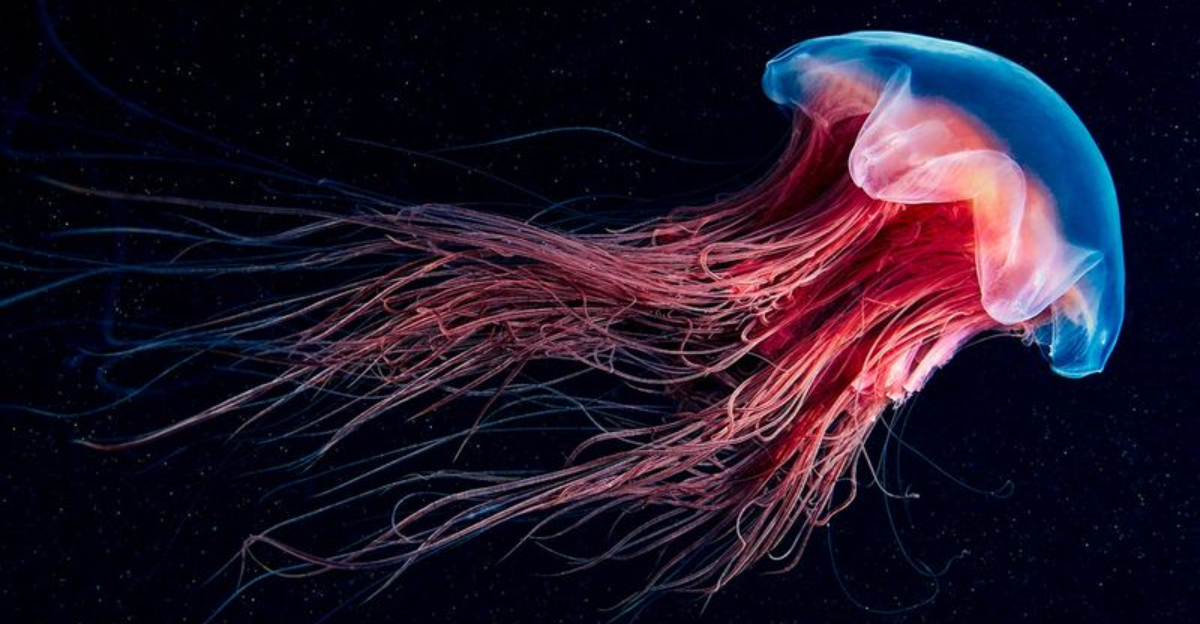The passage of time often brings about remarkable changes in the animal kingdom through the process of evolution.
However, some creatures appear to have remained largely unchanged for millions of years, offering a living glimpse into the prehistoric world.
Let’s dive straight into the article and explore such animals that have defied the typical evolutionary pathway, preserving their ancient features and lifestyles.
1. Horseshoe Crab
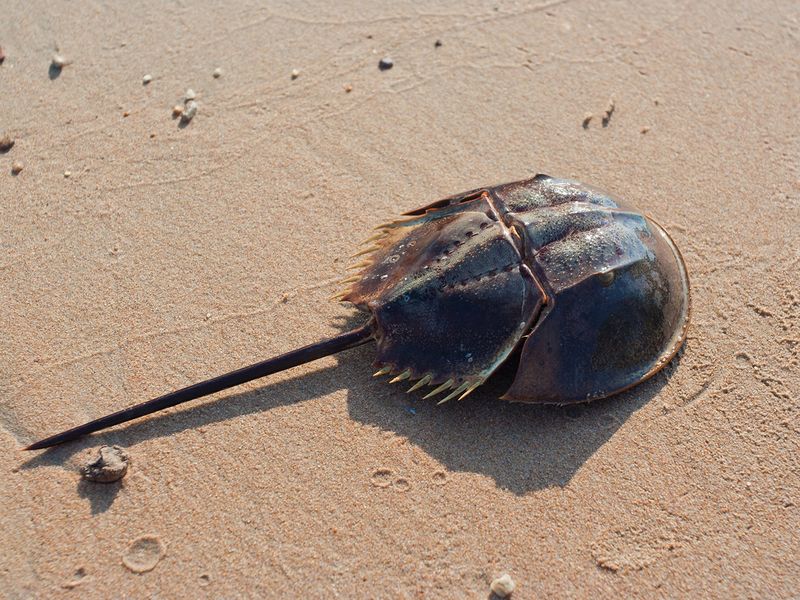
Imagine stepping back in time to an era when dinosaurs roamed the Earth. The horseshoe crab, with its ridged shell and long tail spine, has been around for over 450 million years.
They dwell in shallow ocean waters and come ashore to lay their eggs, a spectacle that’s been repeated through countless generations.
These creatures have remained relatively unchanged, much to the fascination of scientists and nature enthusiasts.
Their blue blood, containing copper-based hemocyanin, sets them apart as a biological marvel. This blood is utilized in the medical field, particularly for testing bacterial contamination.
Despite their ancient lineage, horseshoe crabs face modern threats such as habitat destruction and overharvesting for medical purposes.
2. Coelacanth
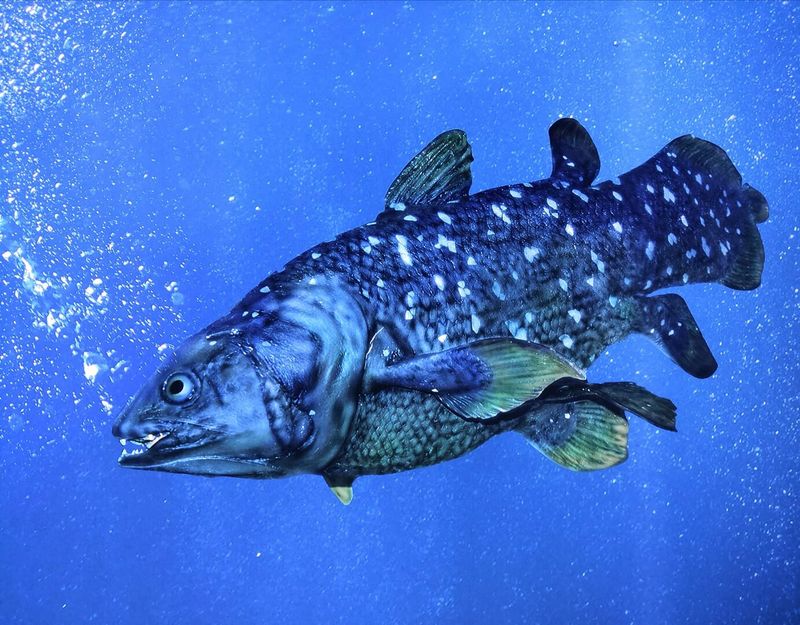
The coelacanth is a true marvel of the ocean depths. Thought to be extinct until 1938, this “living fossil” boasts lobed fins and a structure that suggests its kinship to the first vertebrates to crawl onto land.
Found off the coast of South Africa and Indonesia, their discovery was akin to finding a dinosaur alive today.
These fish can grow up to six feet long and possess a unique hinge in their skull, allowing them to widen their mouths to swallow large prey. Coelacanths live in deep underwater caves during the day, venturing out at night to hunt.
Despite their prehistoric appearance, coelacanths face threats from deep-sea fishing and habitat disruption.
Conservationists are working hard to protect the few remaining populations, ensuring these ancient creatures remain a part of our world. Their existence challenges our understanding of evolution, offering a window into life hundreds of millions of years ago.
3. Nautilus
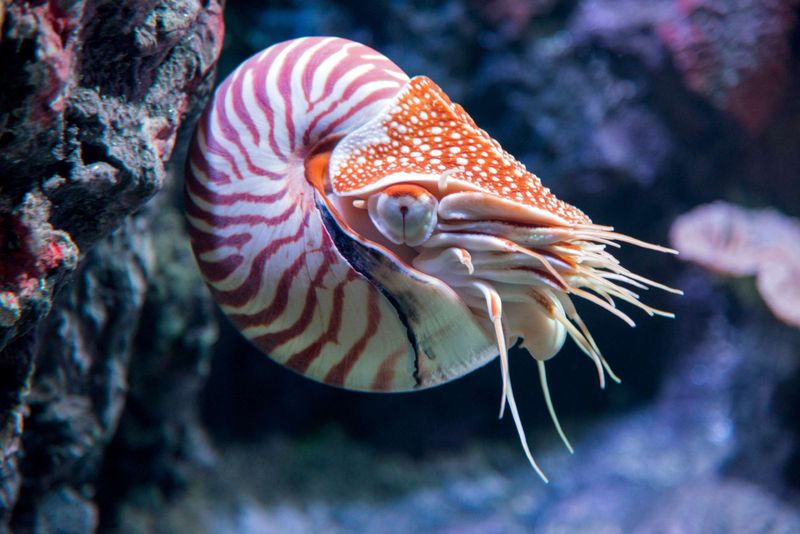
Floating through the ocean with a grace that belies its age, the nautilus captures the imagination. This shelled cephalopod has remained relatively unchanged for about 500 million years.
Its spiral shell, divided into chambers, serves as both protection and a flotation device, allowing it to maneuver through the water with ease.
Nautiluses inhabit the deep slopes of coral reefs in the Indo-Pacific region, where they scavenge for food under the cover of darkness. Their keen sense of smell guides them to prey, showcasing an ancient yet effective method of hunting.
Human fascination with the nautilus can unfortunately lead to overharvesting, as their shells are sought after for decoration.
4. Crocodile
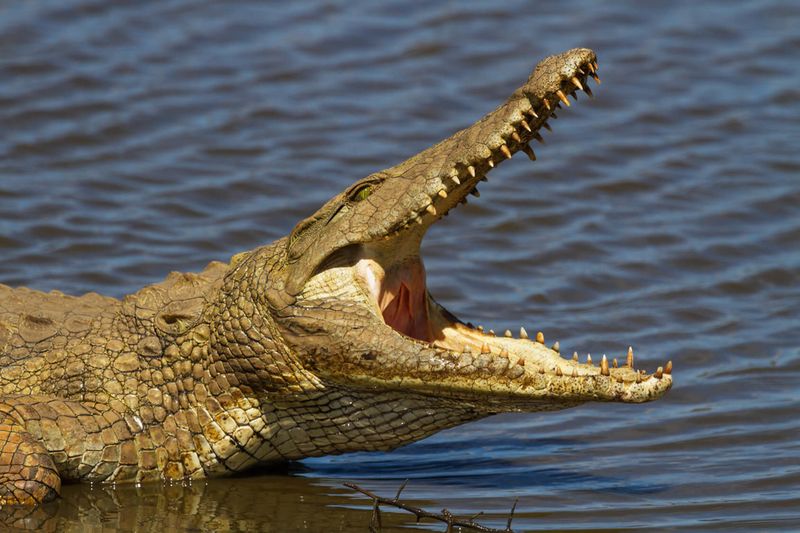
A symbol of raw power and survival, crocodiles have outlasted many species that shared their prehistoric beginnings. These formidable reptiles have graced the Earth for over 200 million years, evolving little since the era of the dinosaurs. They inhabit tropical and subtropical regions, lurking in rivers and swamps.
Crocodiles are known for their ambush hunting technique, using their powerful jaws to snatch unsuspecting prey. Despite their ancient design, they remain one of the top predators in their ecosystems, a testament to their enduring adaptability.
However, human activities pose significant threats to crocodile populations. Habitat destruction and illegal hunting for their skin have led to declining numbers.
5. Tuatara
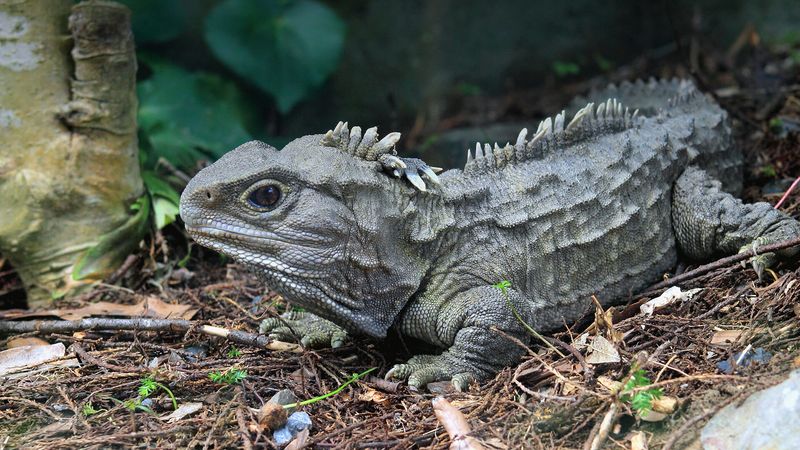
The tuatara, a reptile native to New Zealand, is a living relic from the age of the dinosaurs. Although they resemble lizards, tuataras belong to a distinct lineage dating back over 220 million years. Their spiny crest and unique jaw structure make them fascinating subjects for study.
Tuataras thrive in cooler climates and are often found in burrows, sharing these with seabirds. Their slow metabolism and unusual third “parietal” eye, sensitive to light, are features thought to be retained from their ancient ancestors.
Conservation is critical for tuataras, as they face threats from habitat loss and introduced predators. Breeding programs and protected reserves help ensure their survival.
6. Sturgeon
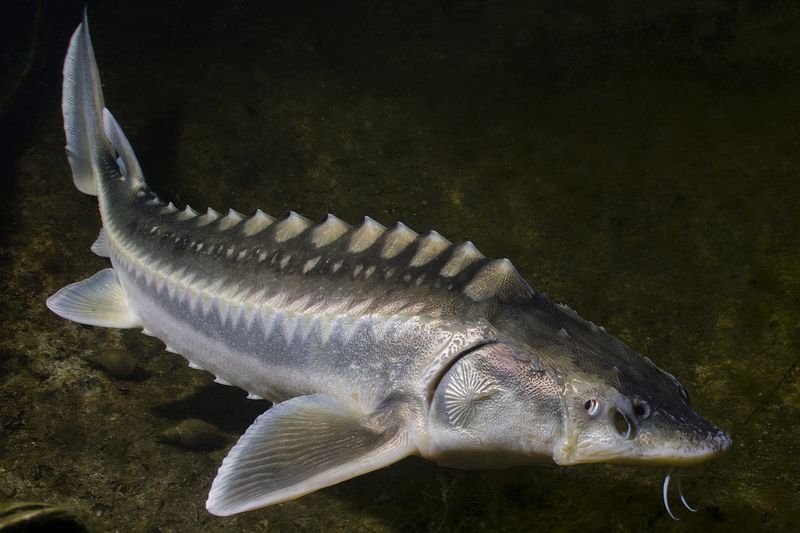
Gliding through the waters of rivers and lakes, the sturgeon is a fish that harks back to prehistoric times. With origins over 200 million years ago, these ancient creatures are renowned for their elongated bodies and bony scutes.
Sturgeons can be found in both freshwater and saltwater environments across the Northern Hemisphere.
They are anadromous, migrating to freshwater to spawn, a lifecycle that has persisted through the ages. Sturgeons are well-known for producing caviar, a delicacy that unfortunately makes them targets for overfishing.
Conservation efforts are vital to prevent sturgeons from disappearing from our waters. By regulating fishing practices and restoring habitats, we can help maintain their populations.
7. Alligator Gar
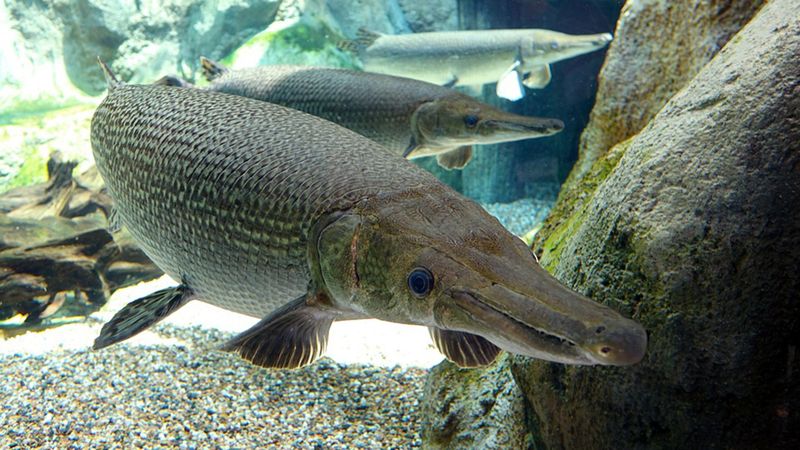
Lurking in the waters of North America, the alligator gar is a fish with roots tracing back over 100 million years. Its elongated snout and sharp teeth lend it a fearsome appearance, reminiscent of ancient aquatic predators. Found in freshwater habitats, they are adept hunters, ambushing prey with precision.
The alligator gar can grow to impressive sizes, sometimes reaching lengths of up to ten feet. Despite their intimidating look, they play a vital role in their ecosystems, maintaining balance by controlling fish populations.
However, habitat destruction and pollution pose significant threats to their survival. Conservation initiatives aim to protect these ancient fish by restoring habitats and educating the public about their ecological importance.
The alligator gar stands as a living connection to the primeval waters of the past, a reminder of the evolutionary pathways that have led to the diversity of life we see today.
8. Komodo Dragon
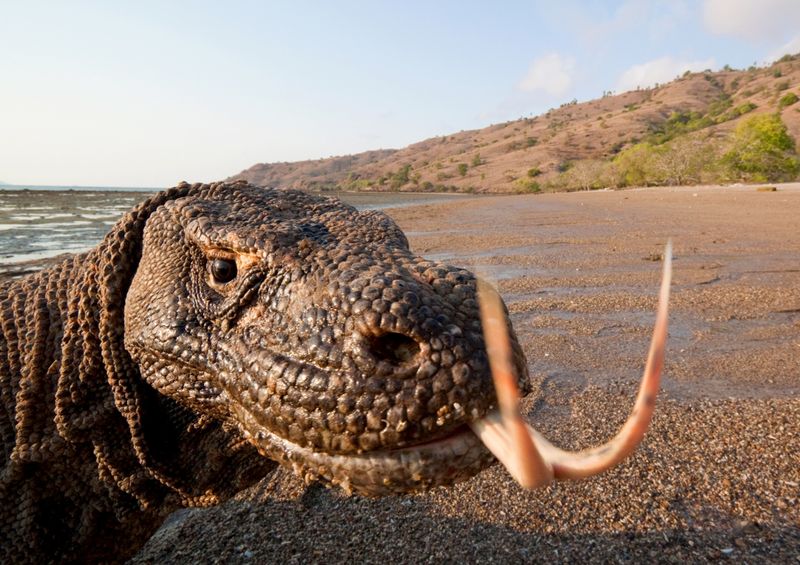
Roaming the islands of Indonesia, the Komodo dragon is a modern-day giant that echoes the age of the dinosaurs.
These massive lizards, growing up to ten feet in length, embody a lineage that stretches back millions of years. They are apex predators, using their keen sense of smell and powerful limbs to hunt.
Komodo dragons are known for their unique hunting style, where they use a combination of physical prowess and venomous bites to capture prey. Their ability to consume large meals enables them to survive in harsh environments where food is scarce.
9. Jellyfish
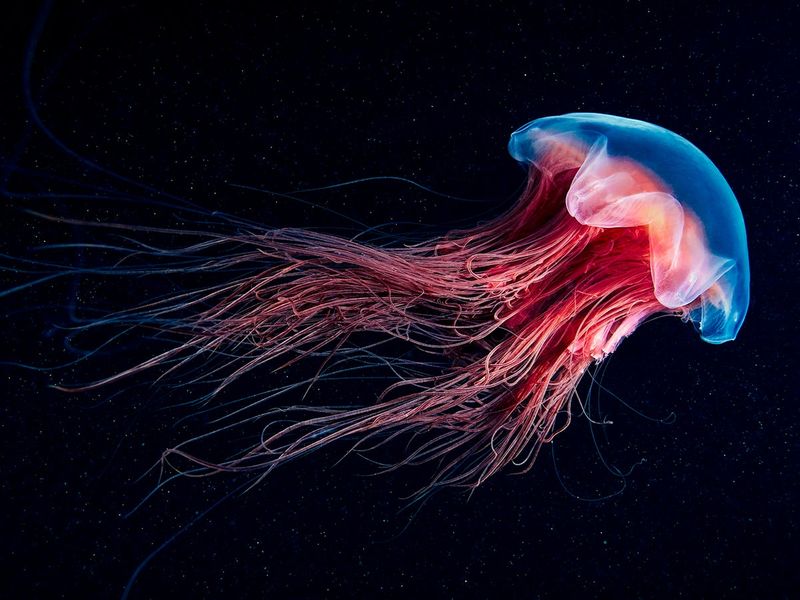
Drifting through the ocean with an ethereal grace, jellyfish are among the oldest living creatures, with a history spanning over 500 million years. Their simple, translucent bodies lack complex organs, yet they have thrived in the Earth’s oceans for eons.
Jellyfish use their tentacles to capture prey, relying on stinging cells to immobilize their catch. This method of sustenance has remained unchanged, a testament to its effectiveness. Found in every ocean, they adapt to a wide range of environments.
However, environmental changes and pollution threaten jellyfish populations. Conservation measures focus on understanding their role in marine ecosystems and mitigating human impacts. Jellyfish offer a glimpse into the primordial past, their survival a reminder of life’s tenacity and adaptability.
Despite their simplicity, they are an integral part of the ocean’s tapestry, weaving together the past and present of marine biodiversity.

